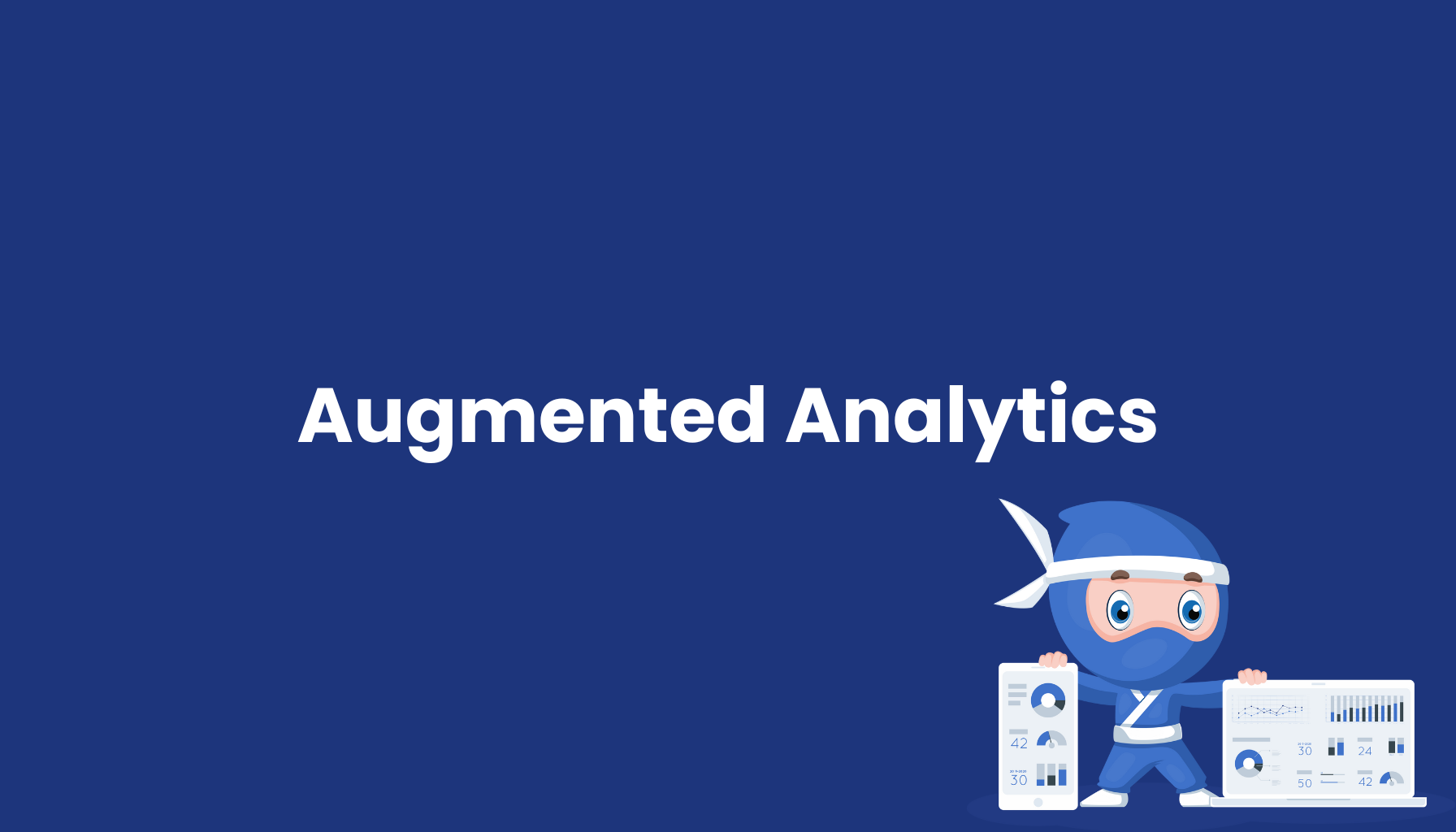Augmented Analytics

Definition
Augmented Analytics is an advanced form of data analysis that uses artificial intelligence, machine learning, and natural language processing to enhance human intelligence in data preparation, insight generation, and decision-making. This technology democratizes analytics through automated data analysis, intelligent visualizations, and natural language interactions with data sources.
Technological Components
Automated Data Preparation: Machine learning automates data cleansing, integration, and transformation. Smart data profiling automatically identifies data quality issues and suggests corrections.
Natural Language Processing (NLP): Conversational analytics enables queries in natural language. "Show me sales trends in Q4" is automatically translated into complex SQL queries.
AutoML (Automated Machine Learning): Algorithm selection, feature engineering, and hyperparameter tuning occur automatically. Citizen data scientists can create meaningful models without deep ML knowledge.
Intelligent Visualization: AI suggests optimal chart types and visualizations based on data types and analysis objectives. Adaptive dashboards automatically adjust to user behavior.
Augmentation Areas
Data Discovery: Automatic recognition of patterns, anomalies, and hidden insights in large datasets. Smart recommendations suggest relevant datasets and analysis paths.
Insight Generation: AI-generated narratives explain data trends and deviations in understandable language. Automated storytelling translates complex analyses into business context.
Predictive Analytics: Automated forecasting and trend extrapolation without manual model development. What-if scenarios are dynamically generated and visualized.
Decision Support: AI-powered recommendations based on data analysis and business rules. Decision trees are automatically extracted from data patterns.
Organizational Benefits
- Democratization: Domain experts without analytics knowledge can perform complex data analyses
- Time-to-Insight: Drastically reduced time from question to actionable insights
- Human Augmentation: Human creativity and business understanding are enhanced by AI capabilities
- Scale Analytics: Automation enables analytics for larger user groups and datasets
- Bias Reduction: Algorithmic objectivity reduces subjective biases in data interpretation
Applications
Business Intelligence: Self-service BI platforms with augmented analytics enable business users to explore data independently. Automated alerting informs about critical KPI deviations.
Financial Analytics: Risk management and fraud detection through automated anomaly detection. Revenue analytics identifies upselling opportunities and churn risks.
Operations Analytics: Supply chain optimization through predictive analytics and demand forecasting. Quality management uses automated root cause analysis for production problems.
Customer Analytics: Customer journey analytics with automatic segmentation and personalization. Sentiment analysis from social media and customer feedback automated.
HR Analytics: People analytics for talent retention, performance prediction, and workforce planning. Diversity and inclusion metrics through unbiased algorithm analysis.
Technology Stack
Data Platforms: Cloud data warehouses like Snowflake, BigQuery, or Azure Synapse as foundation. Data lakes store structured and unstructured data for ML training.
Analytics Platforms: Tableau with Ask Data, Microsoft Power BI with Q&A, or Qlik with Associative Analytics. Native integration of AI/ML capabilities.
AI/ML Engines: TensorFlow, PyTorch, or cloud-native ML services for advanced analytics. AutoML platforms like Google AutoML or Azure ML automate model development.
Conversational Interfaces: Chatbots and voice assistants for natural language data queries. Integration with Slack, Teams, or Alexa for Business.
User Experience Design
Intuitive Interfaces: Drag-and-drop functionality for complex analyses without programming. Visual query builders translate business logic into data queries.
Contextual Recommendations: Personalized suggestions based on user behavior and analysis history. Smart suggestions for relevant metrics and dimensions.
Collaborative Analytics: Shared workspaces for team-based data exploration. Comment functions and annotation tools for collaborative insights.
Governance and Trust
Explainable AI: Transparent algorithms explain how AI arrived at specific insights. Model interpretability creates trust in automated recommendations.
Data Lineage: Complete traceability from data sources to final insights. Automated documentation explains data transformations and calculations.
Security and Privacy: Role-based access control and data masking protect sensitive information. GDPR compliance through privacy-preserving analytics.
Integration and Deployment
API-first Architecture: RESTful APIs enable integration into existing business applications. Embedded analytics bring insights directly into workflow systems.
Cloud-native Deployment: Container-based architecture for scalable, elastic analytics environments. Serverless computing for event-driven analytics.
Hybrid Analytics: On-premises and cloud integration for regulated industries with data residency requirements.
Performance and Scaling
In-memory Processing: Column-store databases and in-memory analytics for sub-second response times. Parallel processing for big data analytics.
Auto-scaling: Dynamic resource allocation based on query complexity and user load. Cost-optimized scaling in cloud environments.
Caching Strategies: Intelligent query caching and materialized views for performance optimization. Predictive pre-computation for frequent analyses.
Future Trends
Causal AI: Evolution from correlation to causality for better business decision making. Causal inference engines automate what-if analyses.
Multimodal Analytics: Integration of text, image, audio, and video data for holistic insights. Computer vision and NLP combined for comprehensive data analysis.
Federated Learning: Privacy-preserving analytics across distributed data sources without central data storage. Edge analytics for real-time decision making.
Quantum-enhanced Analytics: Quantum computing for exponentially more complex optimization and ML problems. Quantum machine learning for previously unsolvable analytics challenges.
Augmented Analytics transforms data analysis from a specialist discipline to a democratized, AI-supported capability that enables every business user to gain actionable insights from complex data landscapes.


